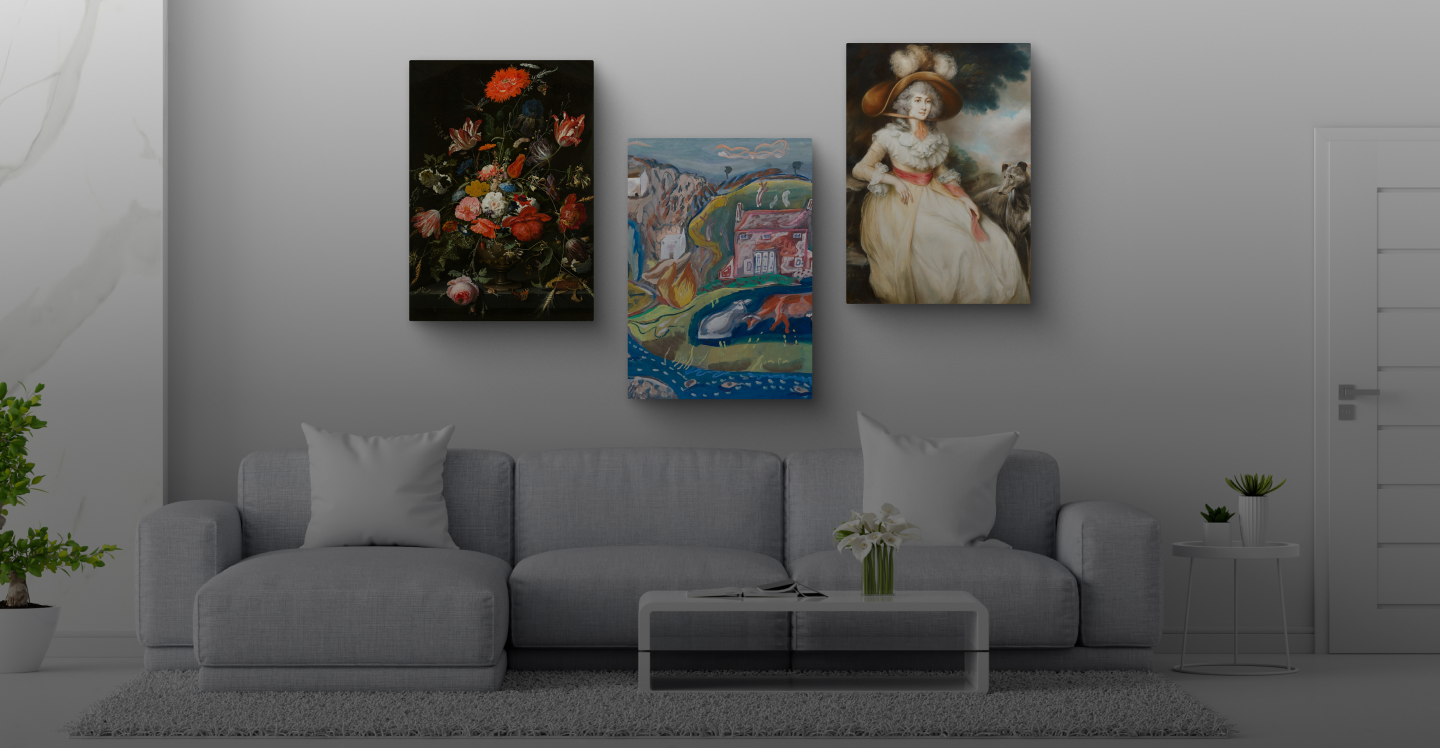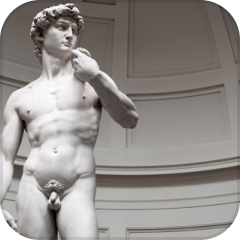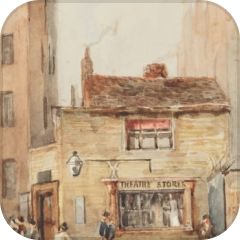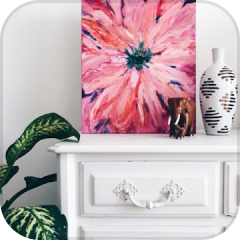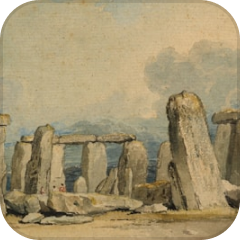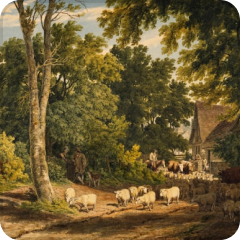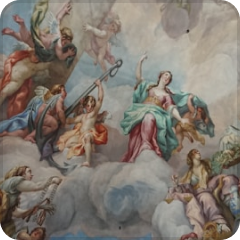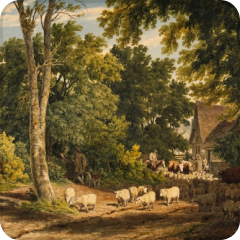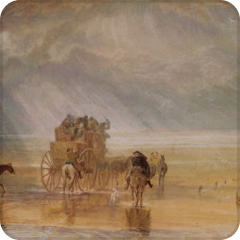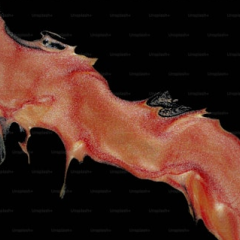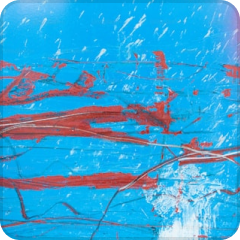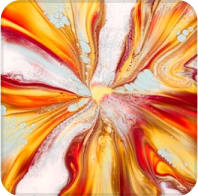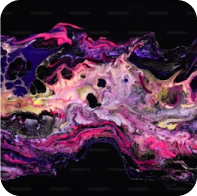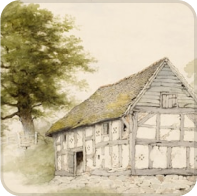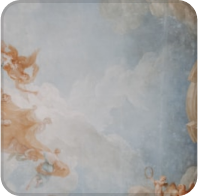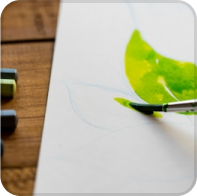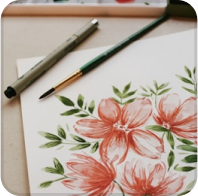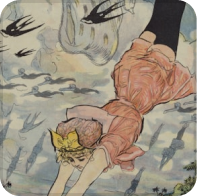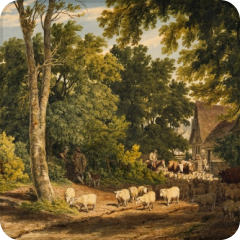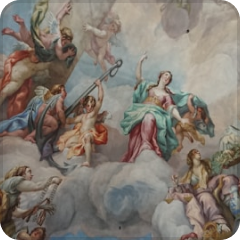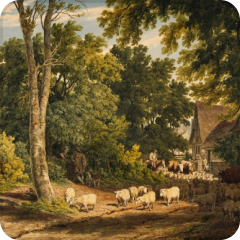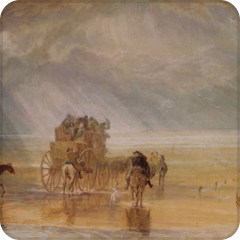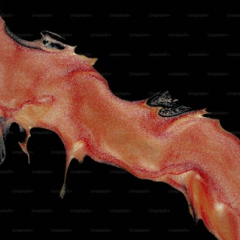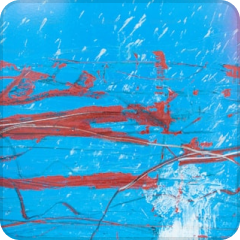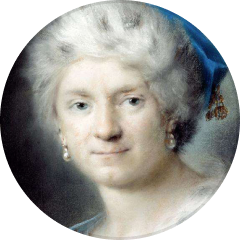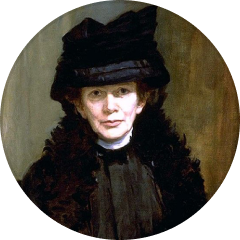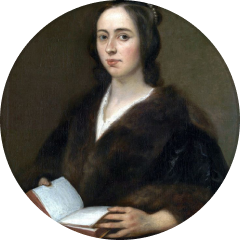





Top Categories
Transform Your Space with Personalized Art Prints
Bring your walls to life with premium, customizable canvas prints. Whether it’s your favorite memories or inspiring art, Zebaco makes it easy to create beautiful, durable pieces that reflect your style.

High-Quality Prints

Affordable Custom Art

100% Satisfaction
What’s On Sale
What Our Customers are Saying


Oliver Stone
"I recently purchased a stunning canvas from Zebaco, and I couldn't be happier with my choice! The vibrant colors and exquisite detail have truly transformed my living room. “


Amelia Rivers
"I recently purchased a stunning canvas from Zebaco, and I couldn't be happier with my choice! The vibrant colors and exquisite detail have truly transformed my living room. “


Ethan Hawke
"I recently purchased a stunning canvas from Zebaco, and I couldn't be happier with my choice! The vibrant colors and exquisite detail have truly transformed my living room. “


Sophia Bennett
"I recently purchased a stunning canvas from Zebaco, and I couldn't be happier with my choice! The vibrant colors and exquisite detail have truly transformed my living room. “


Sophia Bennett
"I recently purchased a stunning canvas from Zebaco, and I couldn't be happier with my choice! The vibrant colors and exquisite detail have truly transformed my living room. “
Commemorating International Photography Day with Framed Glass Photos & Pictures: A Journey Through Time
The art of capturing moments through glass photography represents one of the most fascinating chapters in photographic history. When contemporary photographers like Alex Tomeo create images using century-old methods, they bridge the gap between past and present, demonstrating how traditional glass photography continues to inspire modern visual storytelling. This ancient craft, which dominated the photographic landscape from the late 1800s through the 1920s, offers a unique window into both historical documentation and contemporary artistic expression.
The Historical Foundation of glass photography
glass photography emerged during a revolutionary period in photographic history when inventors and artists sought more reliable alternatives to earlier photographic processes. The development of dry glass plate negatives represented a significant leap forward from wet plate collodion processes, which required photographers to prepare, expose, and develop plates while the emulsion remained moist. This new dry process liberated photographers from the constraints of portable darkrooms and immediate processing, opening up unprecedented possibilities for field photography and documentary work.
The transition to glass plates fundamentally altered how photographers approached their craft. Unlike paper-based negatives, glass provided an exceptionally stable and transparent base that yielded remarkable detail and tonal range. The chemical emulsions applied to these glass surfaces contained silver halides suspended in gelatin, creating a light-sensitive layer that could capture extraordinary nuance and clarity. This superior image quality made glass plates the preferred medium for scientific documentation, portraiture, and landscape photography throughout the late nineteenth and early twentieth centuries.
Museum photographers and scientific documentarians particularly embraced glass photography for its archival qualities and exceptional detail reproduction. The dimensional stability of glass ensured that images remained geometrically accurate over time, making them invaluable for scientific specimens, archaeological artifacts, and architectural documentation. The longevity of properly stored glass plates far exceeded that of paper-based alternatives, with many examples surviving in pristine condition after more than a century.
Rediscovering Hidden Photographic Treasures
Archive discoveries often reveal unexpected treasures, and the uncovering of historical glass plate collections represents some of the most exciting moments in photographic preservation. When library curators and archivists encounter these forgotten repositories, they frequently find themselves face-to-face with extraordinary documentation of bygone eras. These discoveries illuminate not only the subjects captured within the frames but also the working methods and artistic sensibilities of photographers from previous generations.
The process of identifying and cataloging glass plate collections requires specialized knowledge and careful handling procedures. Each plate represents a unique historical document that demands meticulous attention during examination and documentation. Curators must assess the condition of each plate, noting any damage, deterioration, or chemical instability that might affect long-term preservation. This initial assessment guides subsequent preservation efforts and digitization priorities.
Professional archivists recognize that glass plate collections often contain irreplaceable documentation of regional history, natural environments, and cultural practices. The plates discovered in museum archives frequently showcase the dedication of early scientific photographers who understood the importance of visual documentation in advancing knowledge and preserving cultural memory. These historical photographers often worked under challenging conditions, carrying heavy equipment and fragile plates into remote locations to capture images that would inform and inspire future generations.
The Imperative of Photographic Preservation
Preservation of glass plate photographs requires immediate action once collections are discovered. The fragility of these materials means that delayed intervention can result in irreversible loss of historical documentation. Glass plates face numerous threats including physical damage from handling, chemical deterioration of the emulsion layer, and environmental factors such as temperature fluctuations and humidity changes.
Professional preservation efforts begin with comprehensive condition assessments that document the current state of each plate. Conservators examine emulsion adhesion, glass integrity, and any signs of chemical breakdown that might compromise image stability. This documentation creates a baseline for monitoring future changes and guides treatment decisions. The assessment process also identifies plates requiring immediate intervention to prevent further deterioration.
Environmental control plays a crucial role in glass plate preservation. Storage areas must maintain stable temperature and humidity levels to prevent expansion and contraction cycles that can cause emulsion lifting or glass stress fractures. Specialized storage systems protect plates from physical damage while allowing for controlled access during research and digitization activities. These preservation measures ensure that historical photographs remain accessible for future study and appreciation.
The Art and Science of Glass Plate Creation
Creating glass plate photographs demands both artistic vision and scientific precision. The process begins with careful selection of appropriate glass substrates, which must be perfectly clean and free from any defects that might compromise image quality. The glass surface requires thorough preparation including degreasing and polishing to ensure uniform emulsion adhesion across the entire plate surface.
Emulsion preparation represents one of the most critical aspects of glass photography. The photosensitive coating must achieve the proper consistency and chemical balance to respond appropriately to light exposure while maintaining stability during storage and handling. Historical emulsion formulations varied considerably between manufacturers and individual photographers, each pursuing optimal sensitivity and tonal characteristics for their specific applications.
The coating process itself requires steady hands and controlled environmental conditions. Photographers must apply the emulsion evenly across the glass surface while avoiding contamination from dust, moisture, or chemical residues. The drying process demands patience and environmental control, as temperature and humidity variations can create uneven sensitivity or surface defects that compromise final image quality.
Modern practitioners of glass photography often experiment with historical formulations while incorporating contemporary knowledge of chemistry and materials science. This fusion of old and new approaches allows photographers to achieve the distinctive aesthetic qualities of historical glass plates while benefiting from improved consistency and safety measures. The resulting images combine the romantic character of vintage photography with the precision of modern craftsmanship.
Contemporary Revival of Historical Photographic Methods
The revival of glass photography among contemporary artists reflects a broader movement toward analog photographic processes and handcrafted image-making. Photographers seeking alternatives to digital imaging often find inspiration in the deliberate pace and distinctive aesthetic qualities of historical methods. glass photography demands careful consideration of each exposure, encouraging a more contemplative approach to image creation.
Contemporary practitioners appreciate the unique visual characteristics that glass plates impart to photographs. The extended tonal range, exceptional detail resolution, and subtle gradations achievable with glass plates create images with a distinctive quality that differs markedly from both film and digital photography. These characteristics make glass plates particularly appealing for portrait work, where the medium's ability to render fine detail and smooth tonal transitions enhances the representation of human subjects.
The learning curve associated with glass photography attracts photographers interested in mastering challenging processes. Success requires understanding of chemistry, optics, and timing that goes far beyond the requirements of conventional photography. This complexity creates a sense of accomplishment and connection to photographic history that many contemporary artists find deeply rewarding.
Lighting Considerations and Exposure Dynamics
glass photography presents unique lighting challenges that distinguish it from other photographic media. The relatively low sensitivity of glass plate emulsions requires substantially more light than modern films or digital sensors, fundamentally altering the photographer's approach to exposure calculation and lighting design. Understanding these requirements becomes essential for achieving properly exposed images with adequate detail in both highlights and shadows.
The extended exposure times characteristic of glass photography create both opportunities and constraints for photographers. While long exposures can capture subtle lighting effects and atmospheric conditions invisible to faster media, they also demand exceptional stability from both camera and subject. Portrait photographers working with glass plates must coach their subjects through the challenge of maintaining natural expressions and poses during exposures that may extend from several seconds to over a minute.
Natural lighting conditions play a particularly important role in glass photography due to the medium's sensitivity characteristics. Photographers often prefer overcast skies or open shade for outdoor portraits, as these conditions provide the even, abundant illumination that glass plates require while avoiding the harsh contrasts that can overwhelm the medium's dynamic range. Indoor photography typically requires multiple light sources or reflective surfaces to achieve adequate illumination levels.
Professional glass plate photographers develop sophisticated lighting setups that accommodate the medium's unique requirements while creating visually compelling images. Large windows, skylights, and reflective surfaces become essential tools for building up sufficient illumination. The quality of this light often contributes to the distinctive atmosphere associated with glass plate photographs, creating the soft, luminous quality that many find appealing in historical images.
Subject Stability and Motion Control
The extended exposure times required for glass photography place extraordinary demands on subject stability, particularly when photographing people or animals. Portrait subjects must maintain their positions with minimal movement for durations that would be considered extreme by contemporary standards. This requirement fundamentally shapes the interaction between photographer and subject, creating a collaborative process that differs markedly from rapid-fire modern photography.
Experienced glass plate photographers develop strategies for helping subjects maintain comfortable and natural positions throughout long exposures. Posing aids such as head rests, arm supports, and comfortable seating arrangements become essential tools for achieving sharp, well-composed portraits. The photographer's ability to communicate effectively with subjects and create a relaxed atmosphere significantly impacts the success of the final image.
The challenge of subject stability extends beyond human portraits to include documentation of museum specimens, architectural details, and natural subjects. Even slight vibrations from nearby traffic, building movement, or air currents can compromise image sharpness during extended exposures. Glass plate photographers must carefully assess environmental conditions and take appropriate measures to minimize unwanted movement during the exposure period.
Professional studios designed for glass photography often incorporate specialized furniture and positioning devices that help subjects maintain stability while appearing natural and relaxed. These tools, combined with the photographer's skill in directing and encouraging subjects, create the conditions necessary for successful long-exposure portraiture. The resulting images often possess a contemplative quality that reflects the deliberate, unhurried nature of the photographic process.
Equipment Requirements and Camera Systems
glass photography requires specialized equipment designed to accommodate the unique characteristics of glass negatives. Large format cameras capable of accepting glass plate holders represent the most common choice for this type of photography. These cameras must provide excellent stability, precise focusing capabilities, and reliable shutter mechanisms capable of accurate timing for extended exposures.
View cameras and field cameras designed for glass plates typically feature robust construction and flexible adjustments that allow photographers to control perspective, depth of field, and image composition with precision. The ground glass focusing screen provides direct visual confirmation of image sharpness and composition, enabling photographers to make fine adjustments before committing to the exposure. This direct viewing system becomes particularly valuable when working with the critical focus requirements of glass photography.
Lens selection for glass photography involves considerations of coverage, sharpness, and light transmission efficiency. Historical lenses designed specifically for glass plate work often provide optimal performance, though many contemporary large format lenses also produce excellent results. The lens must provide adequate coverage for the plate format while delivering sharp images across the entire frame. Fast lenses with wide maximum apertures help minimize exposure times, though they may sacrifice some image quality compared to slower, more carefully corrected optics.
Tripod stability becomes absolutely critical in glass photography due to the extended exposure times required. Heavy-duty tripods with substantial weight capacity and vibration dampening characteristics help ensure sharp images during long exposures. Many glass plate photographers prefer wooden tripods for their inherent vibration-dampening properties and period-appropriate appearance when recreating historical photographic methods.
Darkroom Procedures and Processing Workflow
The darkroom workflow for glass photography follows specific procedures that accommodate the unique characteristics of glass negatives while ensuring optimal image quality and plate preservation. Safelight conditions must be carefully controlled to prevent fogging of the light-sensitive emulsion while providing adequate illumination for handling and processing operations. The larger size and fragility of glass plates require modified handling procedures compared to film processing.
Development procedures for glass plates often involve tray processing or specialized tanks designed to accommodate the rigid plate format. The photographer must handle plates with exceptional care during all processing steps, using appropriate tongs or handling techniques that avoid direct contact with the emulsion surface. Temperature control becomes critical during development, as variations can create uneven development patterns or emulsion damage.
Fixing procedures require particular attention to timing and solution strength. Glass plates typically require longer fixing times than film negatives due to the thickness of the emulsion layer and the characteristics of the gelatin matrix. The fixing solution must thoroughly penetrate the emulsion to remove all unexposed silver halides while avoiding prolonged exposure that might affect image quality or plate stability.
Washing procedures for glass plates demand careful attention to water quality and flow patterns. The rigid nature of glass plates allows for more vigorous washing than flexible films, but the emulsion surface remains vulnerable to mechanical damage. Photographers typically employ multiple wash stages with gradually decreasing temperatures to ensure complete chemical removal while protecting the delicate emulsion layer.
Artistic Vision and Creative Expression
glass photography offers unique creative possibilities that distinguish it from other photographic media. The combination of exceptional detail resolution, extended tonal range, and distinctive visual characteristics creates opportunities for artistic expression that many contemporary photographers find compelling. The deliberate pace required by the process encourages thoughtful composition and careful consideration of artistic intent.
The visual aesthetic of glass plate photographs possesses qualities that many artists find impossible to replicate through other means. The smooth tonal gradations, fine detail rendering, and subtle highlight transitions create images with a distinctive luminous quality. This aesthetic appeal has led many contemporary photographers to embrace glass plate methods for portraiture, fine art photography, and documentary projects where the unique visual characteristics enhance the artistic message.
Creative control over the glass plate process extends from emulsion preparation through final printing, allowing photographers to influence every aspect of image characteristics. Variations in emulsion formulation, exposure timing, development procedures, and printing methods provide numerous opportunities for artistic interpretation. This comprehensive control over the photographic process appeals to artists seeking maximum creative involvement in their image-making.
The historical associations of glass photography add layers of meaning to contemporary images created using these methods. Photographs created on glass plates automatically reference the rich tradition of early photography while simultaneously making contemporary statements. This temporal dialogue between past and present creates conceptual depth that enhances the artistic impact of glass plate images.
Portrait Photography with Glass Plates
Portrait photography represents one of the most challenging and rewarding applications of glass photography. The extended exposure times required by glass plates demand exceptional cooperation between photographer and subject, creating an intimate collaborative process that often yields remarkably compelling results. The resulting portraits frequently possess a contemplative quality that reflects the deliberate nature of the photographic process.
Successful glass plate portraiture requires careful attention to subject positioning and comfort during extended exposures. Photographers must design poses that subjects can maintain comfortably for the duration of the exposure while appearing natural and relaxed. This often involves the use of posing aids and supports that remain invisible in the final image but provide essential stability during the exposure period.
The psychological dynamics of glass plate portrait sessions differ significantly from conventional photography. Subjects must commit to the photographic process in ways that modern fast photography rarely requires. This commitment often results in more thoughtful expressions and poses as subjects have time to settle into their positions and connect with the photographic moment. The resulting portraits frequently capture aspects of personality and character that faster photographic methods might miss.
Lighting design for glass plate portraits requires careful consideration of the medium's sensitivity characteristics and the need for extended exposures. Photographers typically employ continuous lighting sources rather than flash illumination, creating lighting setups that remain stable throughout the exposure period. The quality and direction of this lighting significantly influence the mood and character of the final portrait.
Documentation and Scientific Applications
glass photography played a crucial role in scientific documentation during its heyday, and contemporary scientists continue to appreciate its unique advantages for certain applications. The exceptional detail resolution and dimensional stability of glass plates make them valuable for documenting specimens, artifacts, and scientific phenomena that require precise visual records. Museums and research institutions often maintain glass photography capabilities for specialized documentation needs.
Scientific photography with glass plates demands rigorous attention to accuracy and reproducibility. Photographers must ensure that lighting conditions, magnification factors, and color rendition remain consistent across related images to facilitate scientific comparison and analysis. The stability and archival qualities of glass plates make them particularly valuable for creating permanent records that may be consulted decades or centuries in the future.
Archaeological documentation represents another area where glass photography continues to provide unique advantages. The medium's ability to capture fine detail and subtle tonal variations makes it ideal for recording artifact surfaces, architectural details, and excavation contexts. The archival stability of glass plates ensures that these archaeological records remain accessible for future researchers and comparative studies.
Natural history photography benefits significantly from the characteristics of glass plate emulsions. The medium's ability to render fine textures and subtle color variations makes it particularly suitable for documenting plant and animal specimens. The deliberate pace of glass photography also encourages more thoughtful observation and composition, often resulting in more scientifically and artistically valuable documentation.
Archival Storage and Preservation Strategies
Proper storage of glass plate photographs requires specialized knowledge and equipment to ensure long-term preservation while maintaining accessibility for research and study. The dual nature of glass plates as both fragile physical objects and irreplaceable historical documents creates unique preservation challenges that demand careful attention to storage environment, handling procedures, and access protocols.
Environmental control represents the foundation of successful glass plate preservation. Storage areas must maintain stable temperature and humidity levels to prevent expansion and contraction cycles that can stress both glass substrates and emulsion layers. Temperature fluctuations can cause differential expansion between glass and emulsion, leading to cracking, flaking, or complete emulsion loss. Humidity control prevents moisture-related deterioration while avoiding the brittleness that can result from excessive dryness.
Physical storage systems for glass plates must provide adequate protection while allowing for controlled access and examination. Specialized storage cabinets with individual compartments prevent plates from contacting each other while providing structural support during handling. Archival-quality materials used in storage construction must be chemically stable and free from components that might outgas harmful vapors over time.
Handling protocols for glass plate collections require specific training and equipment to minimize risk during examination and digitization activities. Conservators and researchers must use appropriate gloves, handling tools, and support systems that distribute weight evenly and prevent localized stress on fragile plates. Documentation of handling activities helps track plate condition over time and identifies any emerging preservation concerns.
Digitization Strategies for Glass Plate Collections
Digitization of glass plate photographs serves multiple preservation and access objectives while presenting unique challenges related to the characteristics of glass-based negatives. High-quality digital capture of glass plates requires specialized equipment and expertise to achieve results that faithfully represent the original image characteristics while providing the resolution necessary for detailed study and reproduction.
Scanning glass plate negatives demands careful attention to lighting design and optical alignment to achieve optimal results. Transmitted light scanning typically provides the best results for glass plates, requiring powerful, evenly distributed light sources that illuminate the entire plate uniformly. The scanning process must accommodate the thickness and potential curvature of glass plates while maintaining sharp focus across the entire image area.
Color management becomes particularly important when digitizing glass plates, as the spectral characteristics of historical emulsions may differ significantly from contemporary photographic materials. Proper color profiling ensures that digital representations accurately reflect the tonal characteristics and color relationships present in the original plates. This accuracy becomes essential for scholarly research and artistic reproduction purposes.
Metadata creation during the digitization process captures essential information about each plate including physical dimensions, condition notes, historical context, and technical specifications. This documentation provides valuable context for researchers while facilitating organization and retrieval within digital archives. Comprehensive metadata also supports future preservation activities and scholarly research initiatives.
Professional Development Through Historical Photography
Learning glass photography provides valuable professional development opportunities for emerging photographers seeking to expand their skills and understanding of photographic history. The hands-on experience of working with historical processes deepens appreciation for contemporary photographic conveniences while developing patience, precision, and problem-solving abilities that enhance overall photographic competence.
Grant-funded apprenticeship programs offer structured learning environments where novice photographers can develop glass plate skills under professional guidance. These programs typically combine theoretical instruction with extensive hands-on practice, allowing apprentices to master both the technical and artistic aspects of the medium. The mentorship component of such programs provides invaluable career guidance and professional networking opportunities.
Portfolio development through glass photography can distinguish emerging photographers in competitive professional markets. The unique aesthetic qualities and demonstrated technical mastery required for successful glass plate work create compelling portfolio pieces that showcase both artistic vision and technical competence. These images often generate significant interest from clients and gallery representatives seeking distinctive photographic approaches.
Career advancement opportunities often emerge from glass photography experience as institutions seek professionals with specialized knowledge of historical photographic processes. Museums, archives, commercial photography studios, and educational institutions value photographers who can work effectively with both contemporary and historical methods. This specialized expertise opens doors to unique professional opportunities that might otherwise remain inaccessible.
Institutional Support and Grant Funding
Funding opportunities for glass photography projects often come from organizations interested in preserving cultural heritage and supporting artistic development. Foundations focused on photography, historical preservation, and arts education frequently provide grants for projects that combine contemporary artistic practice with historical methodology. These funding sources recognize the educational and cultural value of maintaining traditional photographic skills.
Application processes for photography grants typically require detailed project descriptions that demonstrate both artistic merit and broader cultural significance. Successful applications clearly articulate the unique value of glass photography while establishing realistic timelines and deliverable expectations. Budget planning must account for the specialized materials and equipment required for glass plate work, including acquisition of glass substrates, chemical supplies, and processing equipment.
Institutional partnerships enhance grant application competitiveness by demonstrating collaborative support and resource sharing. Museums, universities, and cultural organizations often provide matching funds, equipment access, or exhibition opportunities that strengthen grant proposals. These partnerships also create professional networking opportunities that can lead to future collaborations and career advancement.
Project documentation and reporting requirements for grant-funded glass plate projects typically include both technical and artistic components. Funders expect detailed documentation of processes, outcomes, and lessons learned that can inform future projects and contribute to the broader understanding of historical photographic methods. This documentation often becomes valuable educational resources for other photographers interested in glass plate work.
Specialized Photographic Equipment and Materials
glass photography requires specialized equipment and materials that differ substantially from contemporary photographic supplies. The unique characteristics of glass substrates and historical emulsion formulations demand specific tools and techniques for optimal results. Understanding and acquiring appropriate equipment represents a significant investment for photographers committed to serious glass plate work.
Camera systems suitable for glass photography must accommodate the rigid format and weight of glass negatives while providing the stability and precision necessary for extended exposures. Large format view cameras represent the most common choice, though some photographers successfully adapt medium format systems for smaller glass plates. The camera's focusing mechanism must provide exceptional accuracy to take advantage of the superior resolution capabilities of glass plate emulsions.
Plate holders designed specifically for glass plates provide secure positioning while protecting fragile edges during handling and exposure. These holders must grip plates firmly without creating stress concentrations that might cause breakage. The holder design also affects light-tight sealing and ease of loading in darkroom conditions, making quality holders essential for consistent results.
Chemical supplies for glass photography often require sourcing from specialized suppliers or preparation from raw materials. Historical emulsion formulations may call for chemicals no longer commonly available, requiring photographers to adapt recipes or locate alternative suppliers. Safety considerations become paramount when handling photographic chemicals, particularly those containing heavy metals or other hazardous compounds common in historical formulations.
Contemporary Artists and Glass Plate Revival
A growing number of contemporary artists have embraced glass photography as a means of creating distinctive visual work that stands apart from digital imagery. These artists often appreciate the deliberate pace and unique aesthetic qualities of the medium while exploring themes related to permanence, fragility, and the passage of time. The physical nature of glass plates as art objects adds another dimension to their creative practice.
Artist-photographers working with glass plates often develop highly personal approaches to the medium that reflect their individual aesthetic sensibilities and conceptual interests. Some focus on the historical associations of the process, creating contemporary images that deliberately evoke earlier eras. Others emphasize the unique visual qualities of glass plates while applying them to thoroughly modern subjects and themes.
Exhibition opportunities for glass photography have expanded as galleries and museums recognize the distinctive appeal of these images. The physical presence of glass plates as display objects creates viewing experiences that differ markedly from conventional photographic prints. Backlighting systems designed for glass plate display can create dramatic presentations that emphasize the luminous qualities of the medium.
Collector interest in glass photography has grown alongside the artistic revival of the medium. The unique nature of glass plates as one-of-a-kind objects appeals to collectors seeking distinctive photographic works. The historical associations and handcrafted nature of glass plate images contribute to their appeal in the contemporary art market.
Environmental Portrait Photography
Environmental portraiture using glass plates creates compelling images that place subjects within meaningful contexts while taking advantage of the medium's distinctive visual characteristics. The extended exposure times required by glass plates naturally encourage thoughtful consideration of environmental elements and their relationship to portrait subjects. This deliberate approach often results in more cohesive and meaningful environmental portraits.
Location selection for glass plate environmental portraits must consider both aesthetic and practical factors. The chosen environment must provide adequate lighting for extended exposures while offering meaningful context for the portrait subject. Indoor locations often provide more controllable lighting conditions, though outdoor environments can yield striking results when lighting conditions cooperate.
Props and environmental elements gain increased importance in glass plate environmental portraiture due to the extended exposure times and deliberate compositional approach. Every element within the frame receives careful consideration, as the slow pace of glass photography allows for meticulous arrangement and refinement. This attention to detail often results in more polished and intentional environmental portraits.
The collaborative nature of glass plate environmental portraiture creates opportunities for subjects to participate actively in the image creation process. The extended setup time and multiple test exposures allow subjects to see preliminary results and suggest modifications. This collaborative approach often leads to more successful portraits that accurately represent both the subject and their environment.
Museum and Cultural Institution Applications
Museums and cultural institutions increasingly recognize the value of glass photography for documenting collections, exhibitions, and institutional activities. The archival qualities and distinctive aesthetic of glass plates make them particularly suitable for creating permanent records that reflect the institution's commitment to preservation and scholarly excellence. Many institutions maintain glass photography capabilities for specialized documentation needs.
Collection documentation using glass plates provides exceptional detail and longevity for institutional records. The superior resolution and tonal range of glass plates ensure that important details remain visible in archived images, supporting future research and conservation activities. The stability of properly processed and stored glass plates makes them ideal for creating permanent collection records.
Exhibition documentation through glass photography creates atmospheric records that capture both the visual content and the contemplative mood of museum displays. The deliberate pace of glass photography encourages photographers to consider exhibition spaces more thoughtfully, often resulting in images that convey the educational and cultural significance of museum presentations more effectively than rapid digital documentation.
Staff portraiture using glass plates creates dignified and timeless images that reflect the institutional values and scholarly mission of museums and cultural organizations. These portraits often become valuable historical documents themselves, preserving visual records of the individuals responsible for advancing institutional missions and caring for cultural treasures.
Workshop Instruction and Skill Development
glass photography workshops provide structured learning environments where participants can develop skills in historical photographic processes while gaining hands-on experience with specialized equipment and materials. These workshops typically combine theoretical instruction with extensive practical experience, allowing participants to understand both the science and art of glass photography.
Curriculum development for glass plate workshops must balance historical accuracy with practical instruction that enables participants to achieve successful results. Workshop leaders typically begin with comprehensive overviews of glass plate history and chemistry before progressing to hands-on instruction in plate preparation, exposure calculation, and processing procedures. This progressive approach builds confidence and competence systematically.
Safety instruction represents a critical component of glass plate workshops due to the chemical hazards and fragile materials involved in the process. Participants must understand proper handling procedures for both glass plates and photographic chemicals while learning to recognize and respond to potential safety issues. Workshop facilities must provide appropriate ventilation, emergency equipment, and waste disposal systems.
Practical exercises in glass plate workshops typically progress from simple test exposures to complex portrait and documentary projects. This graduated approach allows participants to master basic techniques before attempting more challenging applications. Workshop instructors often emphasize troubleshooting skills that enable participants to diagnose and correct common problems encountered in glass photography.
Commercial Applications and Professional Services
Commercial applications for glass photography continue to exist in specialized markets that value the unique characteristics and archival qualities of the medium. Portrait studios catering to clients seeking distinctive and timeless images may offer glass plate services as premium options. The rarity and handcrafted nature of glass plate portraits command higher prices while providing clients with truly unique photographic experiences.
Fine art photography markets increasingly recognize glass plate images as valuable collectible works that combine photographic and craft traditions. Galleries specializing in photography often feature glass plate works prominently, recognizing their appeal to collectors seeking distinctive and historically significant pieces. The limited production capabilities inherent in glass photography naturally create scarcity that enhances market value.
Corporate and institutional clients sometimes commission glass photography for special projects that require distinctive visual approaches or historical associations. Anniversary celebrations, heritage marketing campaigns, and prestige publications may benefit from the unique aesthetic and cultural cachet associated with glass photography. These applications typically command premium pricing due to the specialized skills and time requirements involved.
Wedding and event photography markets have begun to recognize glass photography as a luxury service for clients seeking truly unique documentation of special occasions. The formal, timeless quality of glass plate portraits appeals to couples interested in creating heirloom images that will maintain their appeal across generations. The deliberate pace of glass photography also creates meaningful ceremony around the portrait creation process.
Creative Collaborations and Team Projects
Collaborative projects involving glass photography often yield remarkable results that combine diverse expertise and perspectives. Teams that include photographers, historians, conservators, and subject matter experts can create comprehensive documentation projects that serve both artistic and scholarly purposes. These collaborations leverage the unique strengths of each team member while sharing the specialized knowledge required for successful glass plate work.
Subject matter experts contribute essential knowledge about historical contexts, scientific accuracy, and cultural significance that enhances the value of glass plate documentation projects. Their insights help photographers understand the broader implications of their work while ensuring that images serve their intended documentary or artistic purposes effectively. This collaboration often results in more meaningful and impactful final products.
Conservation professionals provide crucial expertise in handling historical materials and ensuring that glass plate projects meet archival standards for long-term preservation. Their involvement helps protect valuable collections while enabling access for photographic documentation. Conservation input also guides digitization strategies and reproduction methods that maximize preservation benefits.
Historians and cultural specialists contribute contextual knowledge that enhances the interpretation and presentation of glass photography projects. Their research and analysis help connect contemporary glass plate work with broader historical and cultural themes while identifying significant parallels between past and present photographic practices. This scholarly foundation often elevates glass plate projects beyond mere technical exercises to meaningful cultural contributions.
Modern Adaptations of Historical Methods
Contemporary glass plate photographers often adapt historical methods to incorporate modern safety standards, material improvements, and enhanced convenience while preserving the essential characteristics that make glass photography distinctive. These adaptations allow modern practitioners to enjoy the benefits of glass photography while addressing some of the practical challenges that limited its historical adoption.
Safety improvements in modern glass photography include enhanced ventilation systems, improved chemical handling procedures, and substitution of less hazardous materials where possible. Contemporary practitioners can access safety equipment and protective gear that was unavailable to historical photographers, making the process more accessible while maintaining authenticity. These safety enhancements encourage broader participation in glass photography without compromising the essential character of the process.
Material improvements in glass quality, chemical purity, and emulsion formulation can enhance the reliability and consistency of contemporary glass photography. Modern manufacturing methods produce glass substrates with superior optical qualities and dimensional stability compared to historical materials. Chemical suppliers now offer photographic chemicals with higher purity levels and better consistency, leading to more predictable results.
Equipment adaptations for contemporary glass photography often involve incorporating modern precision instruments and control systems while maintaining the essential character of historical methods. Digital exposure meters, precision timers, and temperature control systems can improve consistency and success rates without fundamentally altering the photographic process. These modest adaptations make glass photography more accessible to contemporary practitioners.
Cultural Heritage Documentation Projects
glass photography serves as an exceptional medium for cultural heritage documentation projects that seek to create lasting records of traditional practices, historical sites, and cultural artifacts. The archival qualities and distinctive aesthetic of glass plates make them particularly appropriate for projects intended to preserve cultural knowledge and visual traditions for future generations.
Community documentation projects using glass plates often create powerful connections between contemporary communities and their historical traditions. The deliberate pace and formal character of glass photography encourage respectful and thoughtful documentation approaches that honor cultural subjects while creating dignified visual records. These projects frequently become valuable community assets that strengthen cultural identity and historical awareness.
Architectural documentation through glass photography provides exceptional detail and tonal range for recording historic buildings and structures. The medium's ability to capture fine architectural details and subtle material textures makes it ideal for preservation documentation that may inform future restoration or conservation efforts. The archival stability of glass plates ensures that these architectural records remain accessible indefinitely.
Traditional craft documentation represents another valuable application for glass photography in cultural heritage projects. The medium's ability to capture fine detail and subtle variations makes it excellent for recording traditional making processes, tools, and finished products. The formal character of glass plate images often enhances the dignity and significance attributed to traditional crafts and their practitioners.
Lighting Design for glass photography
Lighting design for glass photography requires understanding of the medium's unique sensitivity characteristics and the need to maintain consistent illumination throughout extended exposure periods. The relatively low sensitivity of glass plate emulsions demands abundant light sources while the extended exposure times require stable, continuous illumination rather than brief flashes of intense light.
Natural lighting remains the preferred choice for many glass plate photographers due to its abundance, quality, and historical authenticity. North-facing windows provide excellent diffused lighting for portrait work, while skylights can illuminate larger subjects or group compositions. Outdoor photography typically requires overcast conditions or open shade to provide the even illumination that glass plates require for optimal results.
Artificial lighting systems for glass photography must provide sufficient intensity and color consistency throughout the exposure period. Tungsten lighting systems offer the continuous output and spectral characteristics that work well with glass plate emulsions, though they generate substantial heat that can affect subject comfort during extended sessions. LED lighting systems provide cooler operation and precise color control, though their spectral characteristics may require testing with specific emulsion formulations.
Reflector systems and light modification tools play crucial roles in glass plate lighting design. Large reflective surfaces help distribute available light more evenly while filling shadows and reducing contrast to levels manageable by glass plate emulsions. White fabric scrims and diffusion panels soften harsh lighting while maintaining the intensity levels necessary for proper exposure.
Studio Setup and Workspace Organization
Creating an effective workspace for glass photography requires careful planning and organization to accommodate the unique demands of the process. The studio must provide adequate space for camera setup, subject positioning, and plate handling while maintaining the environmental controls necessary for consistent results. Workflow efficiency becomes particularly important given the time-intensive nature of glass photography.
Darkroom facilities for glass plate work must accommodate larger plate sizes and extended processing times compared to conventional film photography. Enlarger systems capable of handling glass plate negatives require robust construction and precise alignment capabilities. The darkroom layout should facilitate smooth workflow from plate preparation through final processing while maintaining appropriate safelight conditions throughout.
Chemical storage and preparation areas require specialized ventilation and safety equipment to handle the potentially hazardous materials involved in glass photography. Separate storage areas for different chemical categories prevent cross-contamination while ensuring that materials remain stable and effective. Temperature-controlled storage extends chemical life and improves consistency of results.
Plate storage systems within the studio must provide immediate access to prepared plates while protecting them from contamination and damage. The storage system should accommodate various plate sizes and allow for easy identification and retrieval during shooting sessions. Climate control within storage areas prevents condensation and temperature-related problems that could affect plate performance.
Historical Context and Cultural Significance
The cultural significance of glass photography extends far beyond its role as a photographic medium to encompass broader themes of scientific documentation, artistic expression, and historical preservation. During its peak period of use, glass photography served as the primary means of creating permanent visual records for scientific, commercial, and artistic purposes. The images created during this era provide invaluable windows into past societies, environments, and cultural practices.
Scientific expeditions of the late nineteenth and early twentieth centuries relied heavily on glass photography to document discoveries and observations in remote locations. These expeditions produced extensive collections of glass plate images that remain valuable scientific resources today. The exceptional detail and stability of glass plates made them ideal for creating reference materials that could be studied and compared across decades or centuries.
Portrait photography on glass plates captured the likenesses of countless individuals from all levels of society, creating visual records that humanize historical periods and provide intimate connections to past generations. The formal character of glass plate portraits reflects the social conventions and artistic sensibilities of their era while preserving individual personalities and expressions for posterity.
Landscape photography using glass plates documented environmental conditions and geographic features with unprecedented clarity and detail. These images serve as valuable historical records of environmental change while showcasing the artistic capabilities of early photographers working under challenging field conditions. The archival stability of glass plates has preserved these landscape records with remarkable fidelity.
Artistic Expression Through Historical Processes
Contemporary artists working with glass photography often explore themes related to time, permanence, and the relationship between past and present. The physical nature of glass as a medium carries symbolic weight that enhances conceptual artwork dealing with fragility, transparency, and preservation. Artists may deliberately emphasize these material qualities in their work while exploring broader philosophical themes.
Conceptual photography projects using glass plates frequently examine the relationship between contemporary society and historical practices. Artists may create deliberate anachronisms by photographing modern subjects using historical methods, highlighting continuities and changes in human experience across time periods. These projects often generate thought-provoking commentary on progress, tradition, and cultural evolution.
Installation art incorporating glass plate photographs takes advantage of the medium's unique physical properties to create immersive viewing experiences. Backlighting systems, spatial arrangements, and interactive elements can transform glass plate images into three-dimensional art experiences that engage viewers in ways impossible with conventional photographic prints. The fragility of glass plates may itself become an element of the artistic statement.
Performance art documentation through glass photography creates permanent records of ephemeral events while acknowledging the historical tradition of photographic documentation. The deliberate pace of glass photography may influence the performance itself, creating collaborative relationships between artist and photographer that enhance both the performance and its documentation.
Preservation Ethics and Cultural Responsibility
Working with historical glass plate collections raises important ethical considerations regarding cultural heritage preservation and appropriate access protocols. Photographers and researchers must balance the desire for documentation and study against the need to protect fragile and irreplaceable historical materials. These ethical considerations guide decision-making about handling procedures, digitization priorities, and access limitations.
Cultural sensitivity becomes particularly important when glass plate collections document indigenous communities, marginalized populations, or sensitive historical events. Contemporary practitioners must approach these materials with appropriate respect while acknowledging the cultural contexts and power dynamics that influenced their original creation. This sensitivity often requires consultation with descendant communities and cultural experts.
Access equity considerations ensure that the benefits of glass photography projects reach diverse audiences rather than remaining confined to specialized professional or academic circles. Outreach programs, educational initiatives, and community partnerships can broaden the impact of glass plate projects while honoring the cultural significance of the materials and methods involved.
Long-term stewardship responsibilities extend beyond immediate project goals to encompass ongoing preservation and maintenance of glass plate collections and contemporary works. Practitioners must consider the future care requirements of their work while establishing protocols that ensure continued access and preservation for future generations.
International Perspectives and Global Practices
glass photography traditions developed differently across various cultural and geographic contexts, creating diverse approaches and aesthetic traditions that continue to influence contemporary practice. Understanding these international variations enriches contemporary glass plate work while honoring the global heritage of the medium.
European glass plate traditions often emphasized technical precision and scientific documentation, producing extensive collections of archaeological, anthropological, and natural history images. These traditions influenced the development of standardized procedures and quality control methods that continue to inform contemporary practice. The surviving collections provide valuable models for contemporary documentation projects.
American glass photography encompassed both scientific documentation and commercial portraiture, creating diverse bodies of work that reflect the cultural and economic conditions of the expanding nation. Western expedition photography and urban portrait studios produced distinctly different approaches to glass plate work, each adapted to specific environmental and commercial requirements.
Asian glass photography traditions incorporated local aesthetic sensibilities and cultural practices while adapting European technical methods to regional conditions and subjects. These adaptations often resulted in distinctive visual approaches that combined technical excellence with cultural authenticity. Contemporary practitioners can learn valuable lessons from these historical adaptations.
Specialized Subject Photography
Wildlife photography using glass plates presents extraordinary challenges due to the extended exposure times required and the unpredictable nature of animal subjects. Historical wildlife photographers working with glass plates developed innovative approaches to overcome these limitations, including the use of remote triggering systems and carefully controlled captive subjects. Contemporary wildlife photographers interested in glass plate work often focus on more cooperative subjects or controlled environments.
Still life photography represents one of the most accessible applications for contemporary glass plate work, as inanimate subjects eliminate the challenges associated with subject movement during extended exposures. The exceptional detail resolution and tonal range of glass plates make them particularly suitable for documenting objects where fine detail and subtle surface characteristics are important. Museum artifact photography often benefits from these capabilities.
Architectural photography with glass plates requires careful consideration of lighting conditions and structural stability during extended exposures. Building movement from wind, traffic, or thermal expansion can compromise image sharpness even when camera stability is adequate. Successful architectural glass photography often requires timing exposures to coincide with optimal environmental conditions.
Landscape photography using glass plates demands patience and weather awareness to capture optimal lighting conditions during the brief periods when exposure requirements can be met. The extended exposure times can create striking effects with moving elements such as clouds and water, though photographers must carefully balance these effects against the risk of overall image degradation from excessive movement.
Community Engagement and Public Outreach
Public demonstration of glass photography creates engaging educational experiences that help audiences understand photographic history while appreciating the skill and patience required for historical processes. These demonstrations often generate significant interest and enthusiasm, particularly when audiences can observe the entire process from plate preparation through final development.
Workshop offerings for amateur photographers provide accessible entry points into glass photography while generating community interest and support for historical photographic preservation. These workshops typically focus on basic techniques and safety procedures while providing participants with hands-on experience creating their own glass plate images. The social aspects of group learning often enhance the educational experience.
Exhibition opportunities for glass photography help raise public awareness of historical photographic processes while showcasing the distinctive aesthetic qualities of the medium. Museums and galleries often feature glass plate exhibitions that combine historical examples with contemporary work, creating educational experiences that highlight both continuity and evolution in photographic practice.
School programs introducing glass photography to younger audiences help ensure knowledge transfer while fostering appreciation for photographic history and craftsmanship. These programs typically emphasize safety and provide simplified procedures that allow students to experience the essential characteristics of glass photography without encountering excessive complexity or hazards.
International Exchange and Collaborative Networks
Global networks of glass photography practitioners facilitate knowledge sharing, resource exchange, and collaborative projects that advance understanding and practice of historical photographic methods. These networks often operate through professional organizations, online forums, and international workshops that bring together practitioners from diverse backgrounds and geographic locations.
Resource sharing among glass plate photographers helps address the challenges of obtaining specialized materials and equipment. International networks facilitate bulk purchasing arrangements, equipment loans, and knowledge exchange that reduce individual costs while improving access to necessary supplies. These cooperative arrangements often make glass photography more feasible for individual practitioners.
Research collaborations between institutions in different countries create opportunities for comparative studies and cross-cultural perspectives on glass photography traditions. These collaborations often produce scholarly publications and exhibitions that advance understanding of global photographic history while demonstrating contemporary relevance of historical processes.
Cultural exchange programs focusing on glass photography help preserve diverse traditions while fostering international understanding and cooperation. These programs often involve artist residencies, workshop exchanges, and collaborative documentation projects that create lasting professional relationships and cultural bridges.
Quality Assessment and Critical Analysis
Evaluating glass plate photographs requires understanding of both technical and aesthetic criteria that may differ significantly from standards applied to contemporary photography. The unique characteristics of glass plate emulsions and processing methods create distinctive visual qualities that must be appreciated within their proper historical and technical contexts.
Technical quality assessment for glass plates focuses on factors such as emulsion adhesion, chemical stability, and optical clarity that affect both immediate visual impact and long-term preservation prospects. Evaluators must recognize the normal characteristics of glass plate emulsions while identifying genuine defects or deterioration that might require intervention.
Aesthetic evaluation of glass photography often emphasizes qualities such as tonal gradation, detail resolution, and atmospheric effects that showcase the distinctive capabilities of the medium. Critics and curators familiar with glass plate work develop appreciation for subtle qualities that might be overlooked by viewers accustomed only to contemporary photographic media.
Comparative analysis between glass plate images and other photographic media helps identify the unique contributions and limitations of each approach. This comparative perspective enables more informed decisions about when glass photography offers genuine advantages over alternative methods while recognizing situations where other media might be more appropriate.
Mentorship and Knowledge Transfer
Experienced glass plate photographers play crucial roles in preserving and transmitting knowledge about historical photographic processes to new generations of practitioners. The complexity and specialized nature of glass plate work makes mentorship particularly valuable for avoiding costly mistakes and developing efficient working methods.
Master-apprentice relationships in glass photography often extend beyond technical instruction to encompass artistic development and professional guidance. Experienced practitioners share insights about problem-solving, creative approaches, and career development that help apprentices navigate the challenges of working in a specialized field with limited commercial opportunities.
Knowledge documentation through written guides, video recordings, and workshop curricula helps preserve glass photography expertise while making it accessible to broader audiences. These educational resources often incorporate both historical methods and contemporary refinements, providing comprehensive guides for practitioners at various skill levels.
Professional development opportunities for glass plate photographers include specialized workshops, conferences, and certification programs that validate expertise while providing continuing education. These opportunities help maintain high standards within the glass photography community while fostering professional advancement and networking.
Conservation Science and Analytical Methods
Scientific analysis of glass plate photographs provides valuable insights into historical manufacturing methods, chemical compositions, and deterioration mechanisms that inform both preservation strategies and contemporary practice. Analytical methods such as spectroscopy, microscopy, and chemical testing reveal detailed information about plate construction and condition.
Deterioration studies help predict the long-term stability of glass plate collections while identifying factors that accelerate or retard degradation processes. This research guides preservation planning and environmental control strategies that maximize collection longevity. Understanding deterioration mechanisms also informs contemporary glass plate preparation methods.
Material analysis of historical glass plates reveals information about past manufacturing practices and regional variations in glass plate production. This knowledge helps contemporary practitioners understand the relationship between materials and image characteristics while informing decisions about substrate selection and emulsion formulation.
Preventive conservation strategies based on scientific research help protect glass plate collections from environmental damage while maintaining accessibility for research and exhibition purposes. These strategies often involve sophisticated environmental monitoring and control systems that respond to changing conditions automatically.
Regional Variations and Local Traditions
Different geographic regions developed distinctive approaches to glass photography that reflected local materials, cultural preferences, and environmental conditions. These regional variations created diverse aesthetic traditions that continue to influence contemporary practice while providing insights into the adaptability of glass plate methods.
Climate considerations significantly influenced glass photography practices in different regions. Humid tropical climates created challenges for emulsion stability and drying procedures that led to modified formulations and processing methods. Arid regions presented different challenges related to static electricity and dust control that required alternative approaches.
Cultural factors influenced subject matter, compositional approaches, and aesthetic preferences in regional glass photography traditions. Portrait conventions, landscape preferences, and documentary subjects reflected local cultural values while adapting universal photographic principles to specific regional contexts. These cultural adaptations created distinctive visual languages within the broader glass photography tradition.
Material availability in different regions led to variations in glass quality, chemical formulations, and processing methods that created distinctive regional characteristics in glass plate images. Local glass manufacturers often developed specialized products for photographic applications, while chemical suppliers adapted formulations to work with available raw materials and local water conditions.
Safety Protocols and Risk Management
Working with glass photography involves multiple safety considerations that require careful attention and systematic risk management approaches. The combination of fragile glass materials, potentially hazardous chemicals, and specialized equipment creates unique safety challenges that demand appropriate training and protective measures.
Chemical safety protocols for glass photography must address both acute exposure risks and long-term health considerations associated with photographic chemicals. Many historical formulations contained compounds now recognized as health hazards, requiring modern practitioners to implement enhanced safety measures or seek safer alternative formulations. Proper ventilation, protective equipment, and emergency procedures become essential components of safe glass plate practice.
Physical safety considerations include proper handling procedures for fragile glass plates and heavy camera equipment. Photographers must develop safe lifting and carrying techniques that protect both themselves and valuable equipment while preventing costly breakage. Workshop safety protocols should address emergency procedures for chemical spills and glass breakage incidents.
Environmental safety measures ensure that glass photography activities do not create hazards for surrounding areas or personnel. Chemical waste disposal must follow appropriate regulations while preventing environmental contamination. Workshop and studio design should incorporate safety features that contain potential hazards while maintaining functional workflow capabilities.
Research Methodologies and Scholarly Inquiry
Academic research into glass photography encompasses multiple disciplines including art history, chemistry, conservation science, and cultural studies. Scholarly inquiry into glass plate methods and their cultural significance continues to reveal new insights into both historical practices and contemporary applications.
Archival research methods for glass photography often involve interdisciplinary approaches that combine art historical analysis with scientific investigation and cultural interpretation. Researchers must develop familiarity with historical photographic processes while understanding the cultural contexts that influenced glass plate use and aesthetic development.
Experimental archaeology approaches to glass photography involve recreating historical methods and conditions to better understand past practices and their outcomes. These experimental studies often reveal practical knowledge that was never formally documented while testing theories about historical photographic techniques.
Comparative studies between glass photography and other historical and contemporary media help establish the unique characteristics and contributions of glass plate methods. These studies often involve technical analysis of image characteristics combined with cultural and aesthetic evaluation that places glass plate work within broader photographic contexts.
Aesthetic Analysis and Visual Characteristics
The distinctive visual characteristics of glass plate photographs result from the interaction between glass substrates, emulsion properties, and processing methods that create unique aesthetic qualities. The smooth, continuous tonal gradations achievable with glass plate emulsions produce images with exceptional luminosity and depth that many photographers find impossible to replicate through other means.
Detail resolution capabilities of glass plates often exceed those of film-based media due to the fine grain structure and superior optical qualities of glass substrates. This exceptional detail capacity makes glass plates particularly valuable for applications requiring maximum image sharpness and resolution. The absence of film grain creates smooth tonal transitions that enhance the ethereal quality often associated with glass plate images.
Contrast characteristics of glass plate emulsions typically provide longer tonal scales and smoother highlight transitions than many contemporary media. This extended dynamic range allows glass plate photographers to capture subtle lighting effects and atmospheric conditions that might be lost in other photographic processes. The resulting images often possess a luminous quality that enhances both documentary and artistic applications.
Color rendition in glass photography, while typically monochromatic, often exhibits subtle tonal variations and color sensitivities that create distinctive interpretations of natural colors. Understanding these color response characteristics helps photographers predict how different subjects and lighting conditions will translate into the final glass plate image.
Workshop Leadership and Curriculum Development
Leading glass photography workshops requires comprehensive knowledge of both historical and contemporary aspects of the medium combined with strong instructional abilities. Workshop leaders must balance safety requirements with hands-on learning opportunities while accommodating participants with varying experience levels and learning styles.
Curriculum design for glass plate workshops typically progresses from theoretical foundations through practical application to independent project work. This progressive structure allows participants to build confidence and competence systematically while providing multiple opportunities for questions and clarification. The curriculum should address both technical and artistic aspects of glass plate work.
Assessment methods for glass plate workshop participants often emphasize practical competency demonstration rather than written examinations. Participants typically create a series of glass plate images that demonstrate mastery of various techniques while showcasing their developing artistic vision. Portfolio review and critique sessions provide valuable feedback and learning opportunities.
Continuing education opportunities for workshop graduates help maintain and advance glass photography skills while building professional networks within the specialized community. Alumni programs, advanced workshops, and collaborative projects provide ongoing support for practitioners committed to serious glass plate work.
Historical Documentation and Archive Creation
Contemporary glass photography projects often focus on creating new historical documentation that will serve future researchers and cultural historians. These projects recognize that current activities and personalities will become historical subjects for future generations, creating motivation for comprehensive documentation using archival-quality methods.
Subject selection for contemporary historical documentation requires careful consideration of long-term significance and cultural value. Projects often focus on individuals, places, and activities that represent important aspects of contemporary culture while recognizing that historical significance may not become apparent until decades later. Broad documentation approaches help ensure comprehensive coverage of contemporary life.
Metadata creation for contemporary glass plate documentation requires comprehensive information recording that will inform future researchers about technical methods, cultural contexts, and artistic intentions. This documentation becomes particularly important for glass plate work due to the specialized nature of the process and the likelihood that future researchers may lack direct experience with glass plate methods.
Archive organization systems for glass plate collections must accommodate both physical storage requirements and intellectual access needs. The fragile nature of glass plates demands protective storage while the unique value of each image requires detailed cataloging and retrieval systems. Digital surrogates often provide primary access while protecting original plates from handling damage.
Artistic Legacy and Cultural Impact
The artistic legacy of glass photography extends far beyond its role as a historical curiosity to encompass ongoing influence on contemporary visual culture and artistic practice. The distinctive aesthetic qualities of glass plate images continue to inspire photographers, artists, and designers seeking alternatives to digital uniformity.
Cultural impact assessment of glass photography must consider both its historical contributions to visual documentation and its contemporary relevance as an artistic medium. The process itself has become a cultural artifact that embodies values such as patience, craftsmanship, and attention to detail that many find lacking in contemporary digital culture.
Influence on contemporary photography extends beyond direct glass plate practice to encompass broader appreciation for analog processes and handcrafted approaches to image making. The glass plate revival has contributed to renewed interest in alternative photographic processes and has influenced aesthetic preferences even among photographers working primarily with digital methods.
Educational value of glass photography for understanding photographic history and principles continues to make it relevant for contemporary instruction and professional development. The hands-on experience of glass plate work provides insights into fundamental photographic concepts that enhance understanding and appreciation of all photographic media.
Conclusion
The enduring appeal of glass photography in our digital age speaks to fundamental human desires for permanence, craftsmanship, and tangible connection to artistic traditions. As contemporary photographers like Alex Tomeo demonstrate through their dedication to historical processes, glass photography offers more than mere technical curiosity—it provides a pathway to deeper understanding of photographic principles while creating images of exceptional beauty and lasting value.
The revival of interest in framed glass photos and pictures reflects broader cultural movements toward authenticity, sustainability, and meaningful engagement with creative processes. In an era dominated by instant digital imagery, the deliberate pace and physical reality of glass photography offer alternative experiences that many find profoundly satisfying and artistically rewarding.
The preservation of historical glass plate collections and the transmission of glass photography skills to new generations represent crucial cultural responsibilities that extend beyond mere documentation to encompass active stewardship of photographic heritage. The fragile nature of glass plates makes this preservation work urgent, while the complexity of the processes makes knowledge transfer challenging. Success in these endeavors requires sustained commitment from individuals and institutions willing to invest time and resources in specialized preservation activities.
Professional development opportunities within glass photography continue to evolve as educational institutions and cultural organizations recognize the value of maintaining these historical skills. Grant programs, apprenticeship opportunities, and collaborative projects provide pathways for emerging photographers to develop expertise while contributing to the preservation and advancement of glass photography traditions.
The future of glass photography appears secure as growing numbers of artists, educators, and cultural institutions recognize its unique value for both artistic expression and historical documentation. The medium's distinctive aesthetic qualities and archival characteristics ensure continued relevance while the challenging nature of the process attracts dedicated practitioners committed to excellence and historical preservation.
Contemporary applications for glass photography continue to expand as practitioners discover new ways to apply historical methods to modern subjects and themes. From museum documentation to fine art photography, glass plates offer distinctive capabilities that complement rather than compete with digital methods. This complementary relationship suggests a stable future for glass photography within the broader photographic landscape.
The educational value of glass photography for understanding fundamental photographic principles ensures its continued relevance in academic and professional development contexts. Students and practitioners who master glass plate methods often demonstrate enhanced understanding of all photographic processes while developing patience, precision, and problem-solving abilities that serve them throughout their careers.
As we celebrate the achievements of photographers past and present who have dedicated themselves to the demanding art of glass photography, we recognize their contributions to both photographic history and contemporary visual culture. Their work preserves not only individual images but entire ways of seeing and creating that might otherwise be lost to time. Through their dedication, the legacy of glass photography continues to inspire and inform new generations of visual artists and cultural preservationists.
The intersection of historical methodology with contemporary artistic vision creates unique opportunities for meaningful cultural expression that honors the past while addressing current concerns and interests. This temporal dialogue enriches both historical understanding and contemporary artistic practice while demonstrating the continued relevance of traditional craftsmanship in our rapidly changing world.



